Cold Exposure for Peak Performance
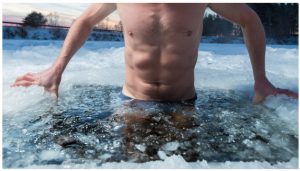
Introduction
In the pursuit of optimal physical and mental health, individuals are constantly seeking innovative methods to unlock their full potential. One such practice gaining recognition is cold exposure—a transformative technique that utilises the power of cold temperatures to elicit a wide array of benefits for both the body and mind. I learnt about the benefits of cold exposure when I came across a podcast where Wim Hof the Snow Man was being interviewed. I decided to give it a listen, little realising that it would forever change my perspective on human potential.
As the podcast began, Wim Hof’s voice resonated with unwavering confidence and infectious enthusiasm. He spoke of his extraordinary feats achieved through the practice of cold exposure, leaving me in awe of his unparalleled accomplishments. Conquering Mount Everest, the highest peak on Earth, wearing nothing but shorts, seemed unimaginable, yet Wim had done it. Running marathons barefoot in the freezing cold, crossing icy rivers without hesitation and enduring lengthy ice baths as if they were a refreshing dip in a summer lake—Wim Hof had truly mastered the art of embracing the cold.
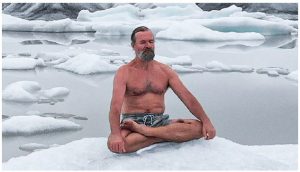
Listening to Wim’s experiences, it became clear that his physical achievements were not the result of superhuman abilities alone. Rather, it was his unwavering spirit, mental resilience and profound understanding of the mind-body connection that propelled him to greatness. He shared insights into the Wim Hof Method, a comprehensive approach combining specific breathing techniques, exposure to cold temperatures and mindset training. Through this method, Wim had not only harnessed the power of the cold but had also discovered a path to unlocking human potential.
The transformative effects of cold exposure on both the body and mind seemed very inspiring to me. The idea that by subjecting ourselves to discomfort, we could unlock hidden depths of strength and resilience resonated deeply within me. Very soon, I was yearning to explore the power of cold exposure firsthand, to tap into my own untapped potential. I have therefore included this chapter in the book which delves into the fascinating world of cold exposure, exploring its profound effects on physical performance, mental well-being and overall health. By understanding the science behind cold exposure and its potential advantages, individuals can integrate this practice into their daily routines, unlocking a wealth of benefits. Prepare to embark on a journey that invigorates the body, sharpens the mind and unveils your true potential.
Physical Benefits of Cold Exposure
Enhanced Metabolism and Fat Burning
Cold exposure has been scientifically linked to an increased metabolic rate and improved fat burning. When exposed to cold temperatures, the body activates brown fat, a type of fat that generates heat and burns calories. This metabolic boost can aid in weight management and overall metabolic health. For example, taking cold showers or engaging in cold water swimming stimulates brown fat activation, leading to increased calorie expenditure and enhanced metabolic efficiency.
Boosted Immune Function
Cold exposure has long been associated with strengthening the immune system. Exposure to cold temperatures triggers the release of white blood cells and stimulates the production of cytokines, enhancing immune responses. This can result in reduced frequency and severity of common illnesses such as colds and flu. Cold water immersion or cryotherapy sessions are known to stimulate immune function and improve overall resistance to infections.
Accelerated Muscle Recovery and Reduced Inflammation
Cold exposure plays a vital role in post-exercise recovery and reducing inflammation. Cold temperatures constrict blood vessels, reducing swelling and inflammation in muscles. Techniques like ice baths or the use of cold compresses facilitate muscle repair and alleviate exercise-induced inflammation. Athletes often incorporate cold exposure into their recovery routines to minimise muscle soreness and optimise training performance.
Mental and Emotional Benefits of Cold Exposure
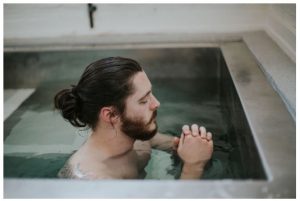
Improved Mood and Mental Resilience
Cold exposure has a remarkable impact on mental well-being, fostering resilience and enhancing mood. Exposure to cold triggers the release of endorphins, natural chemicals that promote a sense of well-being. This practice can reduce symptoms of depression and anxiety, improve stress management and enhance overall mental resilience. Individuals who regularly engage in cold showers or winter swimming often report increased energy levels and a more positive outlook on life.
Enhanced Cognitive Function and Mental Clarity
Cold exposure has been linked to improved cognitive function and mental clarity. The invigorating effects of cold temperatures enhance focus, alertness and concentration. Exposure to cold stimulates the release of neurotransmitters such as norepinephrine, which play a role in cognitive performance. Incorporating breathing techniques, such as the Wim Hof Method, during cold exposure further enhances mental clarity and mindfulness.
Stress Reduction and Resilience Building
Cold exposure serves as a powerful tool for stress reduction and resilience building. The controlled stress response triggered by exposure to cold temperatures helps individuals adapt to stressors in other areas of life. This practice strengthens the body’s ability to handle more significant stressors through a process known as hormesis. By regularly exposing themselves to cold temperatures, individuals can build resilience, improve stress-coping mechanisms and enhance mental well-being.
Incorporating Cold Exposure into Your Routine
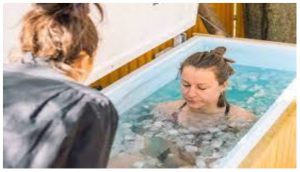
Gradual Adaptation and Safety Precautions
When incorporating cold exposure into a daily routine, it is crucial to start gradually and take safety precautions. Acclimating the body to cold temperatures gradually, starting with shorter exposures and gradually increasing duration and intensity, is important. Listening to the body and understanding personal limits are essential in ensuring a safe and effective experience. Seeking professional advice, especially for individuals with certain medical conditions, is recommended to ensure that cold exposure is suitable for their specific circumstances. By following these safety precautions and allowing the body to adapt, individuals can reap the benefits of cold exposure without undue risk.
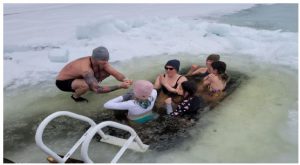
Practical Strategies for Cold Exposure
Incorporating cold exposure into daily life requires practical strategies that suit individual preferences and lifestyles. Several techniques can be utilised, such as cold showers, cold water immersion, outdoor activities in cold environments and cryotherapy sessions. Each method offers unique benefits and experiences. Cold showers can be easily incorporated into morning routines, while cold water immersion and outdoor activities provide opportunities to connect with nature. Cryotherapy sessions offer controlled environments for experiencing cold temperatures. Step-by-step instructions, tips and safety considerations for each method can help individuals incorporate cold exposure seamlessly into their routines.
Mindset and Mental Preparation
Cold exposure is not solely a physical practice; it also involves mental challenges. Developing the right mindset and mental preparation is crucial for embracing and benefiting from cold exposure fully. Visualisation techniques, positive affirmations and mindfulness exercises can help individuals overcome mental barriers, embrace the discomfort and fully experience the transformative effects of cold exposure. Cultivating a resilient mindset and maintaining a positive outlook are key to approaching cold exposure with enthusiasm and unlocking its full potential.
Conclusion
Cold exposure offers a multitude of benefits for physical and mental well-being. From enhanced metabolism and immune function to improved mood, cognitive function and stress resilience, the practice of cold exposure can optimise overall health and performance. Understanding the science behind cold exposure and incorporating practical strategies into daily routines empowers individuals to harness the transformative power of cold temperatures. However, it is essential to approach cold exposure with caution, respect personal limits and prioritise safety. With proper guidance and a willingness to embrace the cold, individuals can embark on a journey of self-discovery, pushing their boundaries and unlocking their full potential for improved physical and mental health. Embrace the chill and embrace a new level of vitality and performance.
 Dr K. Jayanth Murali is a retired IPS officer and a Life Coach. He is the author of four books, including the best-selling 42 Mondays. He is passionate about painting, farming, and long-distance running. He has run several marathons and has two entries in the Asian book of Records in full and half marathon categories. He lives with his family in Chennai, India. When he is not running, he is either writing or chilling with a book.
Dr K. Jayanth Murali is a retired IPS officer and a Life Coach. He is the author of four books, including the best-selling 42 Mondays. He is passionate about painting, farming, and long-distance running. He has run several marathons and has two entries in the Asian book of Records in full and half marathon categories. He lives with his family in Chennai, India. When he is not running, he is either writing or chilling with a book.
